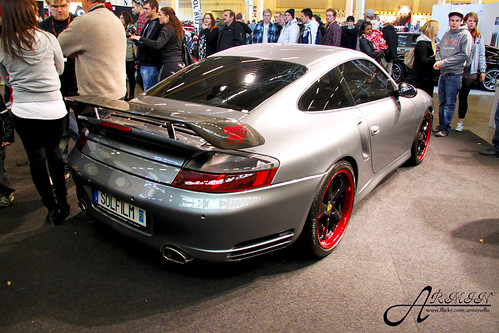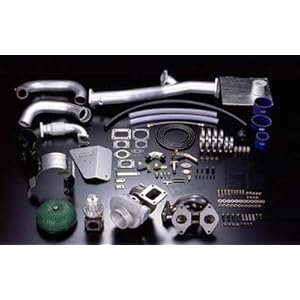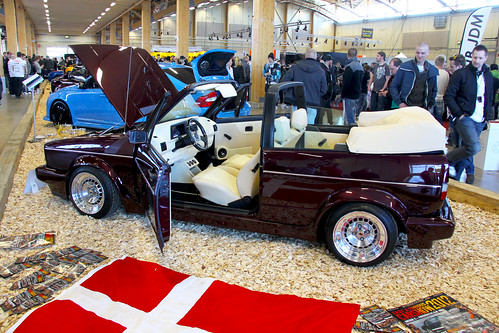HKS History and Products



HKS Motorsports History
Born from speed and performance, HKS is always active in motorsports and competition racing, including various professional drag racing series, JTCC, JGTC, Formula 3, D1 Grand Prix, Superbikes, and many others. No other aftermarket company comes close to what HKS has achieved. In 1974, HKS unveils the industry's first aftermarket turbo kit. 1983, HKS M300 Celica is the first Japanese Car to break the 300km/h record. In 1986, HKS enters the highly competitive Fuji Grand Championship and finished in 9th place. In 1988, HKS RX-7 Turbo II achieves 307.56km/h in the C/M class at the Bonneville Speed Trials. In 1990, HKS GRAD 70 SUPRA wins RRC Drag Racing Championship for 2 consecutive years. In 1992, HKS unveils the 300E V12 F1 spec racing engine.
In 1993, HKS R32 GT-R enters the JTC Group A series and achieves its first victory only two years later. In 1994, HKS Drag R32 GT-R wins the RRC Racing Championship for 2 consecutive years, and the same year HKS also unveils the 310E engine and enters the Japan Formula 3 Series; HKS Opel also enters JTCC Series and finished 1st in Round 1 and 4th Overall. In 1995, HKS T-002 (R33) achieves the fastest lap of 58.716" at Tsukuba Super Lap and again, the same year HKS Super Bike YZF enters the Suzuka 8 Hour Endurance Road Race. In 1996, HKS Drag 180SX wins the BE Drag Series for 2 consecutive years. In 1997, HKS T-002 (R33) achieves the fastest time of 17.64" at the Yatabe 0-300km'h Test Course. In 1998, HKS Drag Celica achieves fastest FF class time of 9.727" at Sendai Highland Raceway.
In 2000, HKS Racing Altezza, or the "Dream Monster Machine", achieves the fastest time of 55.853" at Tsukuba Circuit. In 2001, HKS launches the Drag Supra based on the 3UZ engine outputting 1400ps. In 2002, HKS CLK enters the JGTC GT500 series. In 2003, HKS Genki Hiper Silvia S15 enters the D1 Grand Prix. In 2004, HKS TRB-02 achieves the fastest lap time of 54.739" at Tsukuba Super Lap. In the same year, HKS Racing Performance IS220R enters the D1 Grand Prix. In 2006, HKS Racing Performer CT230R broke the fastest records at several circuits in Japan. In 2007, the same HKS Racing Performer CT230R broke the fastest records at not only the Japanese circuits, but USA's as well. In 2008, HKS celebrates their 35th anniversary, their technology and passion continues to live on.
Exhaust
All HKS exhaustsystems are designed with performance in mind as a priority. Each application is dyno tested and proven to maximize exhaust flow, minimize back pressure, thus increase horsepower, while at the same time increase durability over OEM exhaust. HKS offers wide variety of exhaust system, each has its own distinctive characteristics and you can be sure to find something that will suite your personal need and taste.
Hi-Power Exhaust - As name implies, HKS Hi-Power Exhaust is designed with maximizing horsepower in mind, using technologies and experience gathered in Japanese endurance and GT racing. Important features include race inspired offset muffler and piping design, application optimized piping size, and minimized bends for optimum exhaust path. Turbocharged cars will benefit from the increased flow and decreased backpressure, which results in faster turbo spool and higher power and torque output. Naturally aspirated cars will also benefit from high rpm output which Hi-Power Exhaust provides, as the level of tuning is increased. All HKS Hi-Power Exhaust are made from SUS304 stainless steel, muffler and tip assemblies. Certain applications come with inner silencer for decreased noise.
Carbon-Ti Exhaust - HKS Carbon-Ti Exhaust is a special version of the Hi-Power Exhaust. Similar to Hi-Power Exhaust, Special Edition HKS Carbon Titanium versions are also available for popular applications, which feature carbon fiber muffler shell, titanium tip, and polished SUS304 stainless steel piping.
Titanium Racing Muffler Exhaust - HKS developed this exhaust specifically for their racing Toyota Supra. Optimized for 800 to 1000 horsepower output, this exhaust features 102mm stainless steel piping and 170mm Titanium muffler assembly. The Titanium Racing Muffler is also 40% lighter than the regular HI-Power Muffler. This is HKS' highest flowing exhaust and is designed and intended for racing purpose; it comes with removable silencer when noise restriction is required.
Dragger Exhaust - HKS Dragger Exhaust is the first system that incorporates a seamless muffler shell, resulting in a very uniform stress distribution, and smoother construction. Each system is constructed from stainless steel piping for corrosion protection, and straight-through stainless steel muffler assembly with engraved logo and angle cut tip. HKS Dragger Exhaust has optimized piping size for each application so both power and torque can be optimized for turbocharged and naturally aspirated cars.
Dragger II Exhaust - HKS Dragger II Exhaust is the evolution of the original HKS Super Dragger Exhaust. The new HKS Dragger II Exhaust has a slim-line muffler for added ground clearance and optional silencer for noise suppression. Just like the Dragger Exhaust, each application has optimized piping size so both power and torque can be optimized for turbocharged and naturally aspirated cars.
Turbo Exhaust - HKS Turbo Exhaust is designed for vehicles that are turbocharged from the factory and already feature high power output. These high power turbocharged vehicles needed a bigger exhaust piping and lower back pressure, so HKS uses straight through muffler, and optimized exhaust path for these applications. Benefits include boost pressure gain, faster boost response, faster turbo spool, decreased turbo lag, and higher power and torque output. Expect an average gains of 10-25 horsepower on a stock engine, and much higher on a modified engine.
Legamax Exhaust - Legamax Exhaust was designed for both torque and horsepower optimization, creating a wider power band and higher peak outputs. To do so, each application is designed with different exhaust piping size, different muffler design, and different exhaust path. Doing so allows the exhaust gas to maintain the velocity while increase the volume flow rate. All Legamax Exhausts are constructed from stainless steel for protection from corrosion and better durability.
Legamax Premium Exhaust - An upgraded version of the Legamax Exhaust, further increasing power band and peak output. Most HKS Legamax Premium Exhaust features titanium muffler tips. Please read the Legamax Exhaust section for details.
Sport Exhaust - Similar to Legamax Exhaust in design but for different applications, please read the Legamax Exhaust section for details.
Silent Hi-Power Exhaust - HKS Silent Hi-Power Exhaust is a modified version of the regular Hi-Power Exhaust. Modifications to the muffler and resonator allow for minimum decrease in exhaust flow but a much quieter exhaust tone. Perfect for enthusiasts seeking power gain but only wanting slight increase in exhaust noise over the factory system.
ES Wagon Exhaust - ES Wagon Exhaust is design for sport wagons. Featuring a stylish design yet having the ability to increase power output and create a very moderate exhaust tone.
Legal Exhaust - HKS Legal Exhaust is designed to meet, both emission and noise inspection guidelines, thus being perfectly road legal. Each system is designed to optimized the power output and features a sportier exhaust tone yet staying under the legal limit, perfect for tuners that want to stay road legal.
Superior Spec R Exhaust - HKS Superior Spec R Exhaust is the flagship exhaust system of HKS. Design with extensive R&D and featuring the bests of the HKS technologies. Each system features full titanium exhaust, which is both lightweight and extremely durable. Large diameter piping and optimized exhaust path allow for decreased back pressure, peak performance, and aggressive exhaust tone. Dual layer titanium tips give off that unique JDM appearance, while functional slits help suppress the noise.Expect ultimate performance, aggressive exhaust sound, and enhanced appearance from the HKS Superior Spec R Exhaust.
Universal Mufflers - HKS universal mufflers are available in different sizes for your custom exhaust. Each muffler features higher flow rate and sportier exhaust tone. HKS Universal Hi-Power Muffler are constructed using stainless steel while the Universal Hi-Power Ti Muffler features titanium tips, both are resistant to corrosion and very durable. HKS Universal Carbon Ti Muffler feature a carbon fiber muffler body and a Titanium Tip, while the HKS Universal Titanium Muffler is constructed using titanium, both are lightweight, strong, and have the ability to increase performance.
Downpipe / Up-Pipe - HKS design their downpipe and up-pipe with larger piping for increased flow, mandrel dents allows for increase exhaust velocity and smoother exhaust flow. Certain application will eliminates the stock catalytic converter which dramatically decreases exhaust back pressure. Stainless steel construction allows for high durability. All HKS Downpipe and Up-pipe are direct bolt on. Expect a much quicker turbo spool, higher boost pressure, decrease turbo lag, and higher power output.
Exhaust Accessories and Parts - HKS also offers other exhaust accessories and parts, such as the removable inner muffler silencer which offers an average of 7 dB in exhaust noise reduction. Bumper Protector and Superior Finishers can be installed above the exhaust tip on the rear bumper for added protection and style enhancement.
Intake
The most fundamental way to increase engine output is to increase the amount of air going in, and out of an engine. While car manufacturers design their intake system with cost, placement, minimum noise, and ease of filter change in mind as a priority, performance becomes an inferior idea. This often results in a very restrictive intake system which hurts both throttle response and power output. Installing HKS intake system is one of the easier and cost effective ways to solve these problems.
Super Mega Flow Reloaded Kits - The newly redesigned Super Mega Flow Reloaded intake system features many race proven and patented designs, including HKS Super Funnel Design, which improves debris filtration, but at the same time increases air flow. A new filter element is constructed from 3 layers of dry polyurethane foams each with different density. Unlike other oil based filter elements, the dry element will not contaminate the MAF sensors. The new Super Honeycomb frame allows for 30% more intake surface area compared to the old design, resulting in an improved throttle response. Other structural improvements include new streamline frames, plastic sealing ring, and aluminum backing plates. Most applications have CARB Exempt, making them road legal. Each kit comes with a Super Mega Flow air filter, MAF sensor adapter, and all the necessary mounting hardware.
Racing Suction Reloaded Kits - HKS also redesigned their Racing Suction Reloaded Kits. Sharing the same technology and design as the HKS Super Mega Flow Reloaded Kits, the HKS Racing Suction Reloaded Kits improve filtration and performance at the same time. Unlike the Super Mega Flow Reloaded Kits which use the dry polyurethane element, the Racing Suction Reloaded Kits use the wet 2 layer dual density polyurethane filter element, further improving airflow for the ultimate performance. Other new structural designs are the same as the HKS Super Mega Flow Reloaded Kits. Racing Suction Reloaded Kit also comes with aluminum suction pipe which replaces the factory pipe and further aids the air flow. Each kit comes with a Racing Suction air filter, MAF sensor adapter, aluminum suction pipe, and all the necessary mounting hardware.
Premium Suction Kits - HKS Developed the Premium Suction Kits for cars that come with a well engineered OEM air box. Instead of eliminating these high performance stock air boxes, HKS utilize them by only changing the stock piping and the intake filter. The result is an intake system that offers more flow and better filtration, but keeps the stock resonance and power band characteristics offered by the stock intake system. Each kit comes with a high performance HKS Super Hybrid Filter, aluminum suction pipes, and all the necessary mounting hardware.
Super Hybrid Filters - HKS designed the Super Hybrid Filters for customers who want to improve performance while keeping the stock intake system. HKS Super Hybrid Filters are a direct replacement for the OEM panel filters. The new filter element is constructed from 3 layers of dry polyurethane foams each with a different density. Unlike other oil based filter elements, the dry element will not contaminate the MAF sensors.
Intake Components - HKS also offer other intake components and accessories. Super Mega Flow SMF Mini Assembly and Super Mega Flow SMF Standard Assembly come in many different sizes for your custom intake systems. Replacement Filter Elements and SHF Replacement Filter are available for all the HKS intake kits. Other components include HKS Intake Reducer Pipe, HKS Air Flow Meter Adapter, and HKS Air Intake Funnel.
HKS History and Products

Toyota Supra
HKS History and Products
HKS History and Products
HKS History and Products
Toyota Supra
HKS History and Products
HKS History and Products
Farooq's 1993 Toyota Supra



Farooq's 1993 Toyota Supra
Video Clips. Duration : 0.70 Mins.
Farooq's 1993 Toyota Supra
Zam.
Farooq's 1993 Toyota Supra
Farooq's 1993 Toyota Supra
Farooq's 1993 Toyota Supra

Farooq's 1993 Toyota Supra
HKS History and Products
ItemFeaturesHKS History and Products
HKS History and Products
HKS History and Products

ItemOverviews
HKS History and Products
HKS History and Products Specifications
ItemSpecifications
HKS History and Products
HKS History and Products

*** Product Information and Prices Stored: Toyota Supra
ItemPostTime
HKS History and Products





